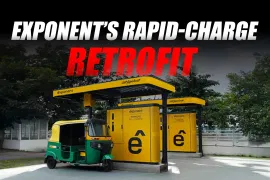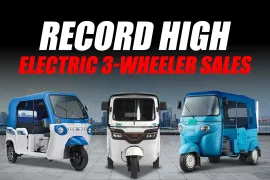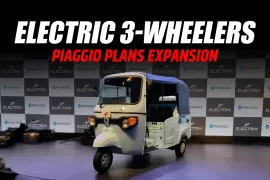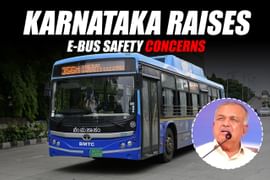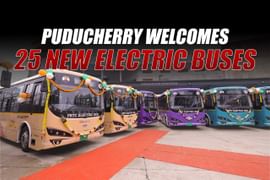India's commercial vehicle industry is at an interesting juncture. The transition towards electric mobility is no longer a lofty aspiration but a national imperative. And the EV summits have now become the nerve centers of discussion, collaboration, and progress, shaping both the pace and direction of India's electric revolution.
1. Ecosystem alignment
Electrification of commercial vehicles touches so many layers: policy, infrastructure, finance, and technology. Summits like CVF 2025 or CII Delhi EV Summit 2025 bring together all such players: policymakers, OEMs, fleet operators, battery suppliers, and financiers. When conversations happen face-to-face, alignment deepens.
A well-structured forum helps to align stakeholder objectives on everything from charging infrastructure roll-outs to financing frameworks for fleet electrification. These gatherings transform scattered initiatives into coordinated strategies that reduce friction between regulation and implementation.
2. Showcasing innovation and readiness
In the commercial EV world, innovation isn't just about the vehicles. It's about battery technology, telematics, thermal management, and service networks, among other things. At conferences like the ACMA Global EV Summit, component makers and OEMs showcase technologies for light commercial vehicles, buses, and freight carriers.
For manufacturers, such exposure creates awareness of new supply-chain partners and future-ready solutions. For fleet operators, it offers a first-hand view of product performance and charging solutions suited to demanding duty cycles. An ecosystem matures faster when innovation is shared openly.
3. Bridging policy and market reality
Indeed, while India's EV policy framework is ambitious, commercial adoption will depend on viability-total cost of ownership, access to infrastructure, and financing. Summits serve as the bridge between policy intent and market execution. When ministries, state agencies, and industry leaders sit together, policy announcements evolve into actionable roadmaps. For example, discussions at the national EV forums have advanced dialogues on financing models for fleet operators and standardization of charging interfaces. These interactions shorten the gap between what is planned on paper and what reaches the road.
4. Building investor confidence and scale
Economies of scale drive the commercial vehicle industry. As such, manufacturers, fleet owners, and financiers alike must be convinced that EV adoption is not some short-term experiment. Summits send a clear signal-a credible and government-backed one-that the shift is real.
Recent data indicates that the public charging infrastructure of India has doubled in the last couple of years. The conversations and showcase of such momentum at the summit create investor confidence. For fleet operators, that confidence in infrastructure translates into purchase decisions — turning pilot projects into large-scale deployments.
5. Forging alliances to drive progress
No one player can electrify India's commercial transport system. The vehicle OEMs need battery suppliers, grid developers, and financiers to all come together. Summits make these connections possible. Partnerships often originate in the breakout sessions; joint ventures result, followed by localized production clusters. Public-private alliances forged at the conference have already spurred e-bus rollouts, electrification of last-mile delivery, and pilot freight corridors. Each partnership puts another link in India's emerging EV supply chain, helping bring down costs and improve reliability.
6. Addressing Commercial-Vehicle-Specific Challenges
While passenger EVs dominate much of the national conversation, the commercial segment clearly has a different set of pain points: long duty cycles, high payloads, and cost sensitivity. Summit gatherings like Commercial Vehicle Forum 2025 help drive such targeted discussion.
It gives sessions on fleet electrification, energy logistics, and driver training, showing how commercial vehicles need different technical and operational solutions. This focused approach means industry-specific priorities are not lost in the more general passenger-vehicle-oriented narrative.
7. Driving sustainable industry transformation
Every EV summit sends a larger message: that sustainability and profitability can align. As India moves toward its 2070 net-zero goal, commercial mobility will determine the pace of emission reduction in freight and logistics. Events that unite industry voices amplify this goal through practical roadmaps, shared data, and tested models.
In facilitating collaboration and policy integration, summits are more than a reflection of India's electric progress; they are the active propulsion of it. For the commercial vehicle industry, one message comes through loud and clear: engagement in this discussion is no longer optional; it is a means to relevance in an electrifying market.
91Trucks is the place to go for all things commercial vehicles. If you need a new or used truck for your business, check it out. We have everything you need, from detailed reviews and exact specs to the best deals that fit your business needs. Stay up to date on the latest news, analysis, and stories from the business.
Follow us on Facebook, Instagram, and LinkedIn, and subscribe to our YouTube channel to get the latest news and videos from experts!

